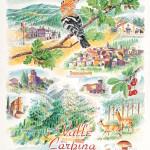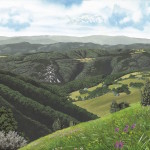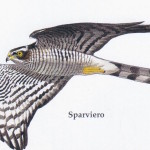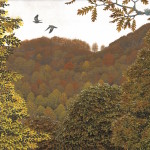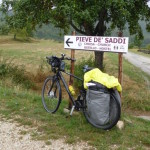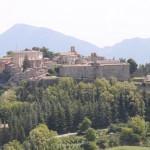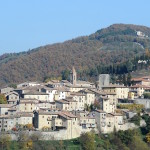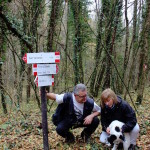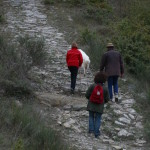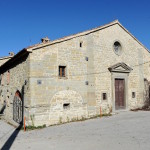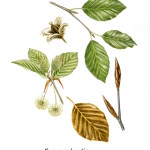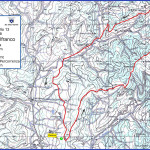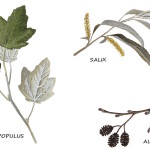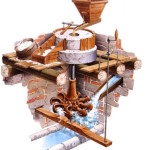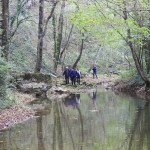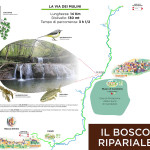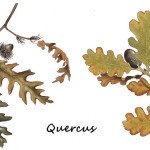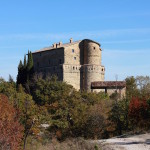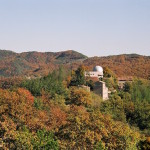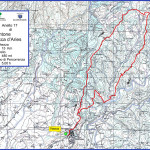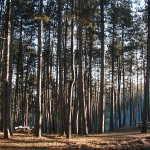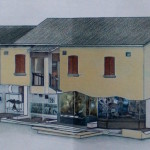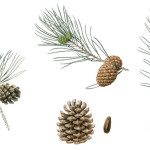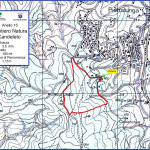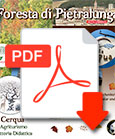Forest of Pietralunga and Carpina Valley

Carpina Valley is an hydrographic basin of about 75 square miles in the Upper Tiber Valley in the Apennins. The Carpina River and its tributaries paint a wild and impressive land, with rugged hills and winding valleys covered with dark oak woods: the Pietralunga and Bocca Serriola Regional Forest, one of the largest and best preserved temperate deciduous forests in Italy. Here the wolf and the sparrow-hawk lead a long and complex food chain.
The Carpina Valley is crossed by 2 important national trails:
– La Via di Francesco, between Città di Castello and Gubbio goes through the Carpina valley;
– Sentiero Italia, between Bocca Serriola and Acquapartita runs along the Carpina northern watershed.
The Municipality of Montone and Pietralunga, whose territories roughly coincide with the Carpina valley, projected a nature trail, called Via del Carpina, in order to let people know the valley wildlife and architectural beauties; the departure and arrival points are the 2 villages of Pietralunga and Montone: the trail includes 2 loop trails (“Anello di Castelfranco” and “Anello di Rocca d’Aries”) and 1 linear path (“La Via dei Mulini”) connecting them.
Monte Castellaccio, the Beech wood and the Castelfranco Ring.
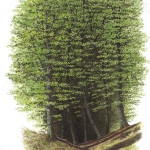 Monte Castellaccio, 839 m. on the sea level, is the Carpina Valley highest mountain.
Monte Castellaccio, 839 m. on the sea level, is the Carpina Valley highest mountain.
From here it is possible to observe the real beauty of this wild and marvellous territory: its different landscapes.
Monte Castellaccio discloses many other peculiarities: the ancient Roman road, the Church of St Mary of the Graces in Castelfranco and, on its northern slopes, the only Carpina Valley beech wood (faggiara di Castelfranco).
The Riparian woodland and the Watermills way.
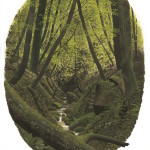 The river Carpina flows along narrow valleys for 29 kms at about 500 mts above sea level. It shows a typical torrential nature, with dry summer periods alternating with severe floodings during the wet season. The water overflowing the banks floods meadows and fields , runs among the trunks crushing the shrubs and uprooting the trees. It saturates the soil making it poor in air and oxygen; under these conditions only a few plants can survive: WILLOWS, POPLARS and ALDERS; they together form the typical RIPARIAN WOODLAND.
The river Carpina flows along narrow valleys for 29 kms at about 500 mts above sea level. It shows a typical torrential nature, with dry summer periods alternating with severe floodings during the wet season. The water overflowing the banks floods meadows and fields , runs among the trunks crushing the shrubs and uprooting the trees. It saturates the soil making it poor in air and oxygen; under these conditions only a few plants can survive: WILLOWS, POPLARS and ALDERS; they together form the typical RIPARIAN WOODLAND.
The presence of Alderwoods strips, now rare over most of the Italian territory, along the Carpina river testifies the high degree of preservation of these ecosystems.
In the recent past, the presence of more than 20 watermills (the last of which was active until 1973) was one of the peculiarities of this beautiful valley. During the Renaissance period (16th and 18th centuries) these mills were real multifunctional factories. The watermills, besides being used for the main activity of chopping and grinding cereals, worked also as spinning mills. The millstones movement was suitable for spinning wool, linen and hemp and the mills were also workrooms for the production of natural dyes used in the textile industry of Florence. This is the main reason for the Carpina valley nickname, the valley of colours (another reason is given by the bright autumn colours of oakwoods and beechwoods in the Forest of Pietralunga).
Unfortunately nowadays all the watermills are only mere ruins owing to their unfavourable position down the humid bottom of the valley; on the contrary the old farmhouses set in a panoramic position on the top of the hills, newly restored and transformed into agriturismi, country-houses and inns, are now one of the main resources of this land.
The Oak wood and the Rocca d’Aries Ring.
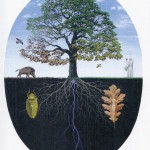 Rocca d’Aries is an ancient fortress whose very old building dates back to the Byzantine period or perhaps to the Lombards (6th-7th centuries). Togheter with Borgo Coloti (its origins date back to the late Middle Ages; in the early 90s, the Coloti hamlet was chosen as an ideal location for the setting up of an Astronomical Observatory given the quality of the absence of light pollution) is included in State property forest of the Carpina Valley, and surrounded by a mediterranean oaks forest: the Turkey Oak and the Downy Oak, togheter with the Hop-Hornbeam and the Flowering Ash.
Rocca d’Aries is an ancient fortress whose very old building dates back to the Byzantine period or perhaps to the Lombards (6th-7th centuries). Togheter with Borgo Coloti (its origins date back to the late Middle Ages; in the early 90s, the Coloti hamlet was chosen as an ideal location for the setting up of an Astronomical Observatory given the quality of the absence of light pollution) is included in State property forest of the Carpina Valley, and surrounded by a mediterranean oaks forest: the Turkey Oak and the Downy Oak, togheter with the Hop-Hornbeam and the Flowering Ash.
The Pine wood and the Candeleto Nature Reserve.
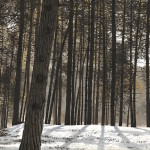 The Natural History Museum of Candeleto is the gate to the Candeleto Nature Reserve, a 1000 ectars Oasis where Pines design a suggestive landscape made of light and shadows. Inside the Museum you can have a look to the whole local wildlife, while the Candeleto Nature trail (4 km. with blue and white signs) let you visit all the typical habitats: the pine wood, the oaks wood, the gorges, the badlands).
The Natural History Museum of Candeleto is the gate to the Candeleto Nature Reserve, a 1000 ectars Oasis where Pines design a suggestive landscape made of light and shadows. Inside the Museum you can have a look to the whole local wildlife, while the Candeleto Nature trail (4 km. with blue and white signs) let you visit all the typical habitats: the pine wood, the oaks wood, the gorges, the badlands).
The Varrea Nature Reserve and the Wolf’s Rings.
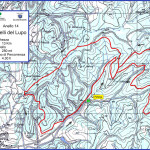 The Wolf’s Ring is the ideal track to discover all the Forest of Pietralunga secrets. It goes through the Varrea Nature Reserve, a lonely area facing the higher Apennines mountains, where wolves stay undisturbed and where Nature and Silence predominate.
The Wolf’s Ring is the ideal track to discover all the Forest of Pietralunga secrets. It goes through the Varrea Nature Reserve, a lonely area facing the higher Apennines mountains, where wolves stay undisturbed and where Nature and Silence predominate.


